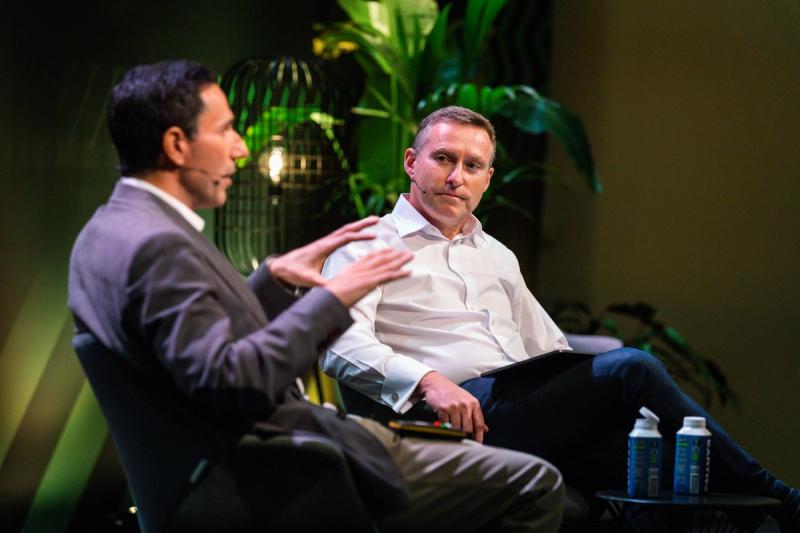Today, the most compelling solutions come from an assembly of partners who bring their respective specialisms together. How do you build and scale these joint solutions?
Mambu is part of PwC's two ecosystem-led banking platform propositions - Tysl and Infinite. We hear from John Lyons who chairs PwC's global digital banking platforms business on his top five tips for building and scaling an ecosystem-led proposition.

1. It starts with the customer: work outside-in
Everything starts with the customer - the person that will benefit from the changes that a bank is seeking to make. Once you are clear of the end-customers' needs, you can shape the transformation agenda of the bank itself. And once that is clear, you can devise a new technology architecture. Ben notes that, "tech-for-tech changes rarely make material differences to a bank's competitive advantage. Outside-in, customer-led transformation solves for customer relevance which deliver greater economic gains and operational efficiencies to the bank, overall".
John adds that, "as a matter of course, we always advise boards to listen to customer needs as this is a vital input into any strategy - commercial, operational, architectural etc. Without understanding customers' needs, wants, pains and desired gains, no bank can embark on the most effective transformational journey".
2. Pick point specialists and stick together
There are a plethora of high quality point specialists in the market - from consultancies to software to infrastructure providers. In building an ecosystem, it is possible to dedicate significant attention to creating the most complete network to accommodate every use case in every region of the world. This endeavour, however, will be costly, time consuming and create a distraction from the primary aim - improving customer experience.
As John experienced, "when we created our two digital banking platform propositions (Tysl and Infinite), we were focussed on finding the minimal set of partners and sticking with them. We could have created a broader ecosystem and cherry-picked a different composition for each client - but we found it simpler and more effective to stick with a small group of partners and work with them every time".
Ben adds, "focus and prioritisation is key - choose the best and stick with each other. That way you build real momentum together and can do more for customers, quicker".
3. Make it real, make it count
For an ecosystem approach to work, it cannot be theoretical. Working demos are a must - showcasing the capabilities of the individual components plus the integrations and interoperability.
Better yet, live client examples. In addition, measurable proof points demonstrate the benefit of moving to an ecosystem-led solution. "Mambu's composable banking ecosystem solution has been deployed by more than 250 clients who reduce costs by 50% and increase time to revenue 65% faster compared to 'last generation' monolith solutions. The solution works and delivers measurable benefits - this gives clients confidence".
John agrees, "we can't turn up with a powerpoint, only. Today, we have our ecosystem-led solutions built and integrated on our sandbox so we can give live demos to clients. We can also point our clients to live examples so they can see that the customer experience is better than the competition".
4. Culture counts: trust, don't transact
Traditionally, partnerships were about lead generation and transactional in nature. Today, partnerships are about ecosystems which are designed around trust and reciprocity. John states that, "the move towards ecosystem-led propositions is a growing trend and new for PwC. We recognise the trend and are determined to lead the industry forward. In building Tysl and Infinite, we were careful to select who we worked with - it was not only the product or capabilities of a partner, but the culture and values that made a difference in our choice of partner".
5. Productise for scale
Once an ecosystem-led proposition is deployed, it is codified. Those 'assets' can be redeployed, across the industry, faster and more cost effectively, time after time.
John has seen that, "each time you deploy the same solution, there is a saving in time. What took nine months to deploy in the first instance, took seven to eight months the second time, then six months the time after that. While these time-based benefits cannot go on indefinitely, the ecosystem-led proposition becomes the industry standard which is quick to deploy and quick to yield benefits. It becomes easier to scale because clients learn that it is the new normal".
"A key design principle for Mambu is to minimise customisation and allow for flexibility through configuration. This way, clients can benefit as quickly as possible through proven, easy to implement ecosystem-led propositions. Removing friction and uncertainty means clients can benefit quickly and, as a software company, we can scale faster, as a result".
